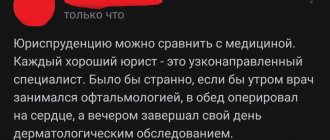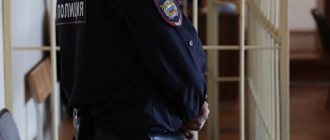The network is filled with all kinds of content: photographs, texts, poems, comics, music. And this content is very insidious. It seems that since it is freely available, it means you can take it and use it at your discretion. For example, put a spectacular photo of a cake on the avatar of your coffee shop group in VKontakte. However, any photograph has an author who can prove authorship in court and sue the entrepreneur for compensation in the hundreds of thousands.
Today we’ll tell you how to use other people’s content legally and how to protect your own creations if you become the author of something.
Why you need to be careful with Internet content
Any object that is created by human creative work is subject to copyright and is protected by law. Such objects include:
- works of science and literature;
- music;
- photos and drawings;
- design;
- software;
- films and videos.
A complete list of copyright objects is contained in Article 1259 of the Civil Code. The article does not list all the results of intellectual activity - there are many more. For example, a meme or podcast is not named, but they are also subject to copyright.
Andrey Makarov, copyright lawyer
Any content on the Internet is a protected object. Some objects often become the subject of controversy. YouTube videos are increasingly appearing in such cases. From a legal point of view, a video is a protected audiovisual work. Photographs are already a completely familiar object, the protection of which is very actively involved, and lawyers and judges have long learned to dispel in the courts the general misconception that “once it is in the public domain, it can be taken and used.” No you can not. Having an object in the public domain does not deprive it of protection and does not eliminate the need to obtain permission to use.
The author of a creation is considered its copyright holder. Only he, by law, has the right to freely dispose of the object. All other persons do not have this right, with extremely rare exceptions. Taking someone else’s photo and posting it on a blog on your own behalf is the same as taking gold earrings out of your hostess’s box at a party and taking them without asking. In a word, this is theft.
Changes in administrative liability for violations of intellectual property rights
On 03/01/2021, a new Code of Administrative Offenses came into force, which contains a number of innovations. The changes also affected issues of administrative liability for violations of intellectual property rights. Let's take a closer look at them.
Note The Code of Administrative Offenses of 2003 contained two articles providing for liability for violation of intellectual property rights: Art. 9.21 “Infringement of copyright, related rights and industrial property rights” and Art. 11.26 “Unfair competition”.
1. “Unfair competition”: new Code of Administrative Offenses vs. Code of Administrative Offenses of 2003.
The Code of Administrative Offenses of 2003, among the actions constituting unfair competition, named the deliberate illegal use by an individual entrepreneur or a legal entity of a business name, trademark (service mark), geographical indication that does not belong to him, including the introduction into civil circulation of goods with the illegal use of results of intellectual activity, means of individualization participants in civil transactions or their goods (Article 11.26).
The disposition and sanction of this article are repeated unchanged in the new Code of Administrative Offenses. Moreover, this norm is now placed in Ch. 13 “Administrative offenses in the field of entrepreneurial activity” of the new Code of Administrative Offenses and is found in its art. 13.33, which is more consistent with the essence of the offense.
At first glance, the disposition of this article with the wording “introduction into civil circulation of goods with the illegal use of intellectual property” covers the main violations of intellectual property rights carried out for commercial purposes, but the real scope of application of Art. 13.33 of the new Code of Administrative Offenses is narrower. This is due to the fact that these violations of intellectual property rights are considered an administrative offense only if they are qualified as acts of unfair competition . Unfair competition is the actions of an economic entity or several economic entities aimed at acquiring advantages (benefits) in business activities, which contradict Law No. 94-Z, other legislative acts and acts of antimonopoly legislation or the requirements of good faith and reasonableness and may cause or have caused losses to other competitors or may cause or have caused harm to their business reputation (paragraph 10, article 1 of Law No. 94-Z). In other words, the presence of unfair competition can only be said in relation to the relations of economic entities that are competitors.
2. “Violation of copyright, related rights and industrial property rights”: new Code of Administrative Offenses vs Administrative Code of 2003.
Article 9.21 of the Code of Administrative Offenses of 2003 in the new Code of Administrative Offenses became Art. 10.15. Its title remained the same - “Infringement of copyright, related rights and industrial property rights”, but the content changed significantly. Let's look at what you should pay attention to.
2.1. Exclusion of “appropriation of authorship” and “coercion of authorship” from the offense
The disposition of Part 1 of Art. has changed. 9.21 of the Code of Administrative Offenses of 2003. Previously, it named three acts entailing liability:
1) attribution of authorship;
2) coercion to co-authorship;
3) disclosure without the consent of the author or applicant of the essence of an invention, utility model, industrial design or other object of industrial property rights before the official publication of information about them.
This norm was subject to fair, in the author’s opinion, criticism from domestic legal scholars due to the fact that the appropriation of authorship mentioned in it applied only to objects of industrial property law, and the appropriation of authorship in relation to objects of copyright (plagiarism), despite the prevalence of this phenomenon and its public danger was not considered an offense.
In the disposition of Part 1 of Art. 10.15 of the new Code of Administrative Offenses only mentions the disclosure without the consent of the author or applicant of the essence of an invention, utility model or other object of industrial property rights before the official publication of information about them. However, the sanction remained unchanged. Therefore, we can say that the new Code of Administrative Offenses not only did not solve the problem of liability for plagiarism, but also excluded liability for such acts as appropriation of authorship in relation to objects of industrial property rights (inventions, utility models, industrial designs, plant varieties), and also for coercion of co-authorship in relation to such objects.
The question may arise as to how necessary it is at the level of administrative legislation to suppress such actions as coercion of co-authorship in relation to objects of industrial property law. Such coercion occurs mainly in relation to inventions, utility models, industrial designs, plant varieties created within the framework of labor relations, i.e. having official status, and is expressed in the fact that heads of enterprises and other officials, using their official position, force employees - authors of official objects created at a given enterprise (organization) to indicate themselves among the co-authors, unreasonably receiving the status of authors, as well as unreasonably receiving remuneration for the creation and use of official objects of industrial property rights. This practice, unfortunately, is quite common, and therefore the legislator’s decision to exclude liability for forced co-authorship from the author is regrettable.
2.2. Changes to the rules on liability for violations of property rights to intellectual property
More significant changes have occurred in terms of the rules establishing liability for violations of property rights to intellectual property.
Article 9.21 of the Code of Administrative Offenses of 2003 provided for two compositions:
1) storage for the purpose of distribution of counterfeit copies of works, recorded performances, phonograms, broadcasts of broadcasting and cable broadcasting organizations (Part 2);
2) illegal distribution or other illegal use of objects of copyright, related rights or objects of industrial property rights (Part 3).
In Art. 10.15 of the new Code of Administrative Offenses, there is only one element left - “illegal distribution or other illegal use of intellectual property” (Part 2).
The exception to the clause “storage for the purpose of distributing counterfeit copies” can be assessed as follows. On the one hand, there was a unification of the elements of the offense in relation to all objects of intellectual property law, without distinguishing offenses in relation to objects of copyright and related rights. On the other hand, the appearance of Part 2 of Art. 9.21 of the Code of Administrative Offenses of 2003 was at one time due to the fact that the most effective way to combat counterfeiting in the field of copyright and related rights was the seizure of such products in retail outlets and warehouses. To apply the rule providing for liability for the distribution of counterfeit copies, it was necessary to prove the fact of sale, in particular, to make test purchases, and to bring to administrative liability under Part 2 of Art. 9.21 of the Code of Administrative Offenses of 2003, it was enough to identify counterfeit goods in retail or warehouse premises. At the same time, the sanction provided for the possibility of confiscation of the subject of the administrative offense, i.e. counterfeit products. On the other hand, bringing a person to administrative responsibility under Part 2 of Art. 9.21 of the Code of Administrative Offenses of 2003 for possession of counterfeit copies for the purpose of distributing them could not be an administrative prejudice necessary to bring such a person to criminal liability under Part 2 of Art. 201 of the Criminal Code, which in turn significantly reduced the effectiveness of applying the norms of criminal law.
The question arises of how one can assess the effectiveness of the provisions of Art. 10.15 of the new Code of Administrative Offenses in the fight against counterfeiting. To answer it, you need to determine what acts are covered by the disposition of Part 2 of Art. 10.15 of the new Code of Administrative Offenses with the expression “illegal distribution or other illegal use.”
It should be said right away that legislation in the field of intellectual property law does not use such a concept as “illegal use.” Use becomes illegal due to the fact that such use is carried out in violation of the exclusive right of the copyright holder in relation to the corresponding object of intellectual property. Therefore, defining a violation of the exclusive right to objects of copyright, related rights and industrial property rights as an act entailing administrative liability would contribute to a more accurate qualification of the offense committed.
The Copyright Law states that violations of copyright or related rights are actions committed in contradiction with the requirements of the Copyright Law (Clause 1, Article 55). Therefore, the answer to the question of whether there has been a violation of an exclusive copyright or related right should be given based on the content of such a right, defined, accordingly, in Art. 16, , and the Copyright Law.
It is necessary to pay attention to the following circumstance. The mere presence in a retail establishment or warehouse of counterfeit copies of works, phonograms and other objects of related rights cannot be considered as illegal use. From the point of view of the Copyright Law, such an action as storage for the purpose of introducing into civil circulation is not directly named as violating an exclusive right. Among the actions that constitute the content of the exclusive right both in relation to works and objects of related rights, only reproduction (production of copies) and distribution of manufactured copies are directly named. Therefore, the absence in Art. 10.15 of the new Code of Administrative Offenses of a special composition, which provides for liability for storing counterfeit copies for the purpose of distributing them, will not allow bringing to administrative liability only for the fact that a counterfeit is found in a retail facility or in a warehouse.
In contrast to the legislation on copyright and related rights, the legislation on inventions, utility models, industrial designs, plant varieties, topologies of integrated circuits, trademarks (service marks) and geographical indications speaks of liability for violation of the exclusive right to the corresponding object of intellectual property, and at the same time determines the actions that constitute such violations . Such actions directly include not only the production and distribution of counterfeit products, but also their transportation and storage for the purpose of introducing them into civil circulation.
Thus, a violation of the exclusive right to a trademark is the use of a trademark or a designation confusingly similar to it, without the permission of the owner of the trademark, expressed in the commission of actions recognized in accordance with the Trademark Law as the use of a trademark (clause 3 of Art. 3 of the Trademark Law). The use of a trademark for the individualization of goods in respect of which the trademark is registered is carried out, inter alia, by using the trademark on goods that are produced, offered for sale, sold or otherwise introduced into civil circulation, stored, transported or imported into the territory of the Republic of Belarus for the purpose of introducing into civil circulation, as well as on labels and packaging of such goods (Clause 1, Article 20 of the Trademark Law).
Violation of the exclusive right to a geographical indication is determined in a similar way. The use of a geographical indication for the individualization of goods in respect of which it is registered is carried out, inter alia, by its application, among other things, on goods that are produced, offered for sale, sold or otherwise introduced into civil circulation, stored, transported or imported into the territory of the Republic of Belarus for the purpose of introduction into civil circulation, as well as on labels and packaging of such goods (subclause 1.1, clause 1, article 16 of the Law on Geographical Indications).
The use of inventions, utility models, industrial designs is recognized not only as the manufacture of a product using, respectively, an invention, utility model or industrial design, but also its offering for sale, other introduction into civil circulation, as well as storage for these purposes (Article 36 of the Law about patents).
Compared to Part 3 of Art. 9.21 of the Code of Administrative Offenses of 2003, the sanction provided for in Part 2 of Art. 10.15 of the new Code of Administrative Offenses: there was a reduction in the amount of the fine applied to individuals (Part 3 of Article 9.21 of the Code of Administrative Offenses of 2003 provided for the imposition of a fine in the amount of 30 to 50, and Part 2 of Article 10.15 of the new Code of Administrative Offenses provided for the imposition of a fine in the amount of 10 up to 30). The amount of fines applied to individual entrepreneurs and legal entities has not changed.
As before, the legislator provides for the possibility of both confiscation of the subject of an administrative offense, regardless of whose ownership it is, and the imposition of a fine without confiscation.
Read this material in ilex >>* *follow the link you will be taken to the paid content of the ilex service
How to punish for copyright infringement
The copyright holder, within the framework of civil proceedings, may demand from the copyright infringer:
- stop using the content - remove other people’s photographs, texts, videos from the site or blog;
- compensate for losses or pay compensation.
According to Art. 1301 of the Civil Code, compensation may be:
- From 10 thousand rubles. up to 5 million rubles
- Double the value of the counterfeit.
- Double the cost of the right to use, depending on the price of the license for the work.
The author has the right to claim any amount as compensation, but the court will take into account the circumstances of the case: exactly how many objects were stolen, how the offender behaved. Based on this data, the judge will make a decision. Typically, compensation in copyright infringement cases is substantial.
For example
, a Novosibirsk poetess wrote a children's poem “Traffic Light” and published it on the portal Stikhi.ru. One day she looked into the Rich Family hypermarket and found a series of toys with musical accompaniment, to which her poem was superimposed. The woman filed a lawsuit alleging copyright infringement. The court awarded Rich Family compensation in the amount of 290 thousand rubles. You can read more about this case here.
For the theft of other people's content, not only civil liability is provided, but also criminal liability. It occurs if plagiarism caused major damage to the author or other copyright holder. As the Plenum of the Supreme Court explained, in each specific case the judge himself decides whether to recognize the damage as large or not, depending on the actual losses and lost profits. Punishment for the violator may include a fine, compulsory or correctional labor, and even imprisonment. Cases of suspended imprisonment are not uncommon. So, a St. Petersburg resident downloaded two pirated programs from the Internet and received a 2.5-year suspended sentence.
Briefly about the main thing
- The law protects videos, films, photographs, texts, images posted on the Internet. The fact that they are freely available does not change the rule: take someone else’s content only with the consent of the author.
- Copyright arises automatically from the moment the work is created. But you can take additional measures and make your life easier in case you have to prove authorship in court.
- This measure includes registering programs and databases with Rospatent, depositing works, saving drafts and sources, and placing a copyright icon.
- To avoid paying huge compensation, always enter into a licensing agreement with the copyright holder. It can be short, the main thing is to indicate in it the subject, limits, period and territory of use of the content.
- Another legal use option is to take content posted online under a Creative commons license. But be careful here: license terms do not always allow commercial use. Look for photos and music licensed under CC BY, CC BY SA, CC BY ND.
How to protect your copyrights
A copyrighted object is automatically protected by law. I wrote an article, developed an application, took a photo, recorded a training video course - copyright earned. Therefore, it is not necessary to take additional measures. But if it comes to court, the author will have to prove his authorship of the work. This is where the methods that we will discuss below come in handy.
Register software with Rospatent
Software and mobile application developers can contact Rospatent and register their development. To do this you need:
- Prepare an application and deposited materials, including an abstract.
- Confirm your consent to the processing of personal data.
- Pay the state fee.
- Submit documents through the website of the Federal Institute of Industrial Property or through State Services.
Sample applications are available on the Rospatent website in the “State registration of computer programs or databases” section.
Here are the details for paying the state duty, for organizations the cost is 4,500 rubles, for individuals 3,000 rubles.
Rospatent will review the application, enter the development into the register and issue a state registration certificate. No more than 62 days are allotted for everything.
Deposit works
Depositing is the storage of a sample of an author's creation. Until 2018, the service was provided by the Russian Authors' Society, currently - by specialized companies.
Depositing can be useful for authors, screenwriters, photographers, artists, bloggers - anyone who creates unique original content.
The works will be stored in the registry in electronic form. In the event of litigation, the custodian of the registry will indicate when the work was deposited. The early copy is considered the original.
Depositing is carried out by Technology Platform LLC IREG, National Register of Intellectual Property JSC nRIS, the depositary Copyright Bank and other companies. The cost of the service is about 1,000 rubles.
We talked more about the deposit procedure in the article “Copyright: how to protect your works.”
Save drafts and work
Raw photos, test videos, and book manuscripts help confirm authorship. For example, illustrators and designers can save images in PSD format, the main format of Photoshop.
Andrey Makarov, copyright lawyer
One very illustrative photo incident can serve as a good life hack for photographers. In short, there is a court decision that confirms that you can prove the authorship of a photo if you have a source file with a large frame capture in your hands. That’s why I now advise all my photography clients to slightly trim the corners of their photos before publishing them.
Place a copyright icon
The copyright sign and inscriptions prohibiting copying of materials perform an informative function. When there is a copyright icon on a photo, website or design, it is easier to establish the fact of violation. And if a competitor took it and covered it up, you can safely demand compensation, according to Art. 1300 GK.
It is best to put a copyright symbol and indicate the last name, first name and year next to it. For example, © Alexey Alekseev, 2021.
If you don’t want to waste time and money, protect yourself at least with everyday methods. For example, put a date on the work and send it by mail to yourself, or use the “Fix uniqueness” function for texts on text.ru. Even such simple methods will be useful for establishing authorship.
If it does happen...
There are two options for the development of events: pre-trial settlement of the conflict and trial, if the first option does not work.
Pre-trial conflict resolution
First, write a letter of complaint to the violator of your rights. Contacts can be found on the site where you saw your content. If the content was posted not on the website, but, for example, on a social network, then contact the resource administration immediately.
lists the requirements for completing an application (letter of claim).
And at the end of the statement, you can give the offender a little nightmare: “If this information is not removed from your site within 24 hours, we will file a statement of claim in court.”
.
Note: the application can be submitted in writing (sent by mail), or submitted electronically (scanned document). If the application is submitted by a person authorized by the copyright holder, then it is necessary to attach to the application a document that confirms these powers (for example, a power of attorney).
If it turns out that the site owner ignores your letter, then you still have the right to contact the hosting provider. To install a provider, you can use the service https://whois-service.ru/. And please note that when filing a claim with the hosting provider, you must have prepared evidence of your authorship.
We send a letter of claim/application to the hosting provider, but only without a threatening signature about going to court (requirements for the application can be found on the website of the hosting company).
There are also exceptions where the information intermediary will not be liable. I will list:
Trial
If the first option does not produce results, then we go to court. And here the difficulties begin... Let's figure it out.
1. If the offender (defendant) and the author (plaintiff) are individuals, then you will need to apply to a court of general jurisdiction either at the place of residence/location of the defendant, or (if the place of residence/location of the defendant is unknown) at the place of residence of the plaintiff.
2. If one of the parties to the conflict is a legal entity, then the claim will be filed with the arbitration court at the location of the violator (defendant).
3. Next, we draw up a statement of claim. The requirements for the statement of claim are listed in.
Well, this stage has been sorted out - let's move on. After the court makes an act (decision) in your favor and it comes into force , you need to send an application to Roskomnadzor (). All further actions of Roskomnadzor are listed
How not to violate other people's copyrights
The main rule to follow: use content only with the permission of the author, or content with an open license.
Obtain permission from copyright holders
This is the only 100% reliable way to legally use photos, texts, videos, music for commercial purposes without the risk of earning a fine.
Most often, the copyright holder expresses his consent to the use of the creation through a license agreement. There are two types of license:
- Exclusive - when the author transfers the right to use the content to one person or company.
- Non-exclusive - when the author transfers the right to many people or companies. Stock photos work on this principle.
Important.
Always check what type of license is in the contract. Otherwise, the author may sell the content to several competing companies at the same time.
Conclude the agreement in free written form, but be sure to include in it:
- the subject of the contract is very detailed;
- limits of use, for example, can be copied but not recycled;
- term of the contract (if the term is not specified, the contract is considered to be valid for five years);
- territory of use;
- other user obligations.
Andrey Makarov, copyright lawyer
Permissions from copyright holders must be properly completed. Messages via messenger or email. mail will not be enough, all this will not have legal force. Written permission in free form will also not work, because According to Article 1235 of the Civil Code of the Russian Federation, the right to use the result of intellectual activity can only be granted under a license agreement. It doesn't have to be bulky and expensive. It can be short and free of charge, but it must contain essential (mandatory by law) conditions.
If the author agrees, you can conclude an agreement with him on the alienation of the exclusive right. In this case, the object will become your property without reservations. You can place it anywhere and even resell it to other companies. The only thing is that the author's name must be indicated.
To legally play music in an establishment, the owner must have an agreement with the copyright holder, either with a private intermediary or with a government intermediary. State mediators are the Russian Copyright Society (RAS) and the World Intellectual Property Organization (WIPO). It is best to enter into contracts with them, because they work with the majority of domestic and foreign performers. Read more about this in our article “How not to break the law when you play music in your store, bar or cafe.”
Use openly licensed content
Many authors publish their creations online under the Creative commons license. It allows you to solve two problems at the same time: authors - protect their rights, users - use content within the framework of a specific license for free.
There are several types of CC license. Each permits the use of works in a certain way. For example, CC BY allows you to copy, distribute, change material with the only condition: indicate the author.
Not all CC licenses are open for commercial use. Businesses can use content licensed under CC BY, CC BY SA, CC BY ND.
Look for pictures with an open license on Flickr, music on Netlabels and FMA, videos on YouTube.
Copyright does not last forever. By law, they are valid for the entire life of the author and 70 years after his death. After this, the work goes into the public domain. Then it can be used without anyone's consent and without payment of remuneration.
Important.
The author's right to the name still remains. You can't take content whose author died a long time ago and call it your own.
Violation of property and non-property rights
Copyright infringement is not uncommon these days. Many fraudsters, copying or using original works, invent ways to profit from this.
One of the important criteria for classifying copyright rights is the purpose for which the works were created. On this basis, both property and non-property relations can arise in the sphere of authorship . In the same way, violations on this basis can carry these two goals.
Expert opinion
Orlov Viktor Vitalievich
Legal consultant with 7 years of experience. Specializes in family law. More than 3 years of experience in developing legal documentation.
In the latter case we are talking about plagiarism . Its essence is that a certain person (group of persons, organization) pretends to be the author of an original work, although he is not one.
In this case, the results of the intellectual creativity of this author are used without his knowledge and consent. In fact, the plagiarist is trying to expose himself to third parties as the author of the work.
Violation of property rights is always aimed at personal enrichment through the appropriated results of creativity. Most often, tangible works are subject to this, for example, original goods.
For such violations there is a term “counterfeiting” . Violation of property rights occurs in the case of mass sales of goods created on the basis of an original work.
The intellectual right of the author is violated.
In addition, violations include ignoring the name of the author on a work or an authorized publication of this work, as well as violation of the contract with the author regarding payments under this agreement (non-payment, partial non-payment of royalties, delay in payment under the contract, etc.).









